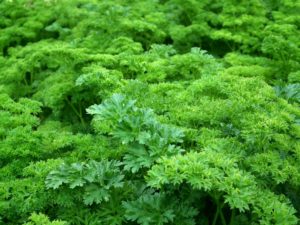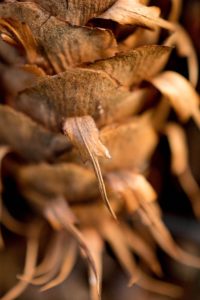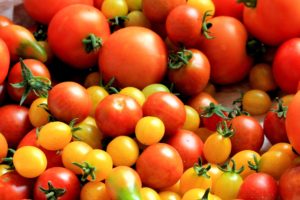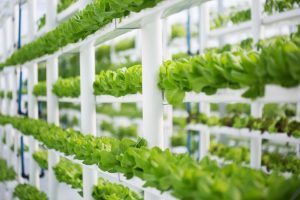A Detailed Guide to Macronutrients and Micronutrients for Hydroponics
Nutrients for hydroponics are often divided into macronutrients and micronutrients. While they may not be familiar to you, knowing what each does, and how much to feed to plants is important. Likewise, you should also know how to tell when your plants aren’t getting enough. Even if you don’t plan on mixing your own nutrients for hydroponics, a little knowledge goes a long way.
What are macronutrients for plants?
Macronutrients are elements that plants (and other life forms) need in large quantities to thrive.
The primary plant macronutrients are:
- Nitrogen (N)
- Phosphorus (P)
- Potassium (K)
- Carbon ( C )
- Hydrogen (H)
- Oxygen (O)
The secondary plant macronutrients are:
- Calcium (Ca)
- Magnesium (Mg)
- Sulfur (S)
What are micronutrients for plants?
Micronutrients are the elements that plants only need in very small, or trace, amounts. These elements are sometimes also called tertiary nutrients.
Micronutrients for plants include:
- Boron (B)
- Chlorine (Cl)
- Copper (Cu)
- Iron (Fe)
- Manganese (Mn)
- Molybdenum (Mo)
- Nickel (Ni)
- Zinc (Zn)
Nutrients for Hydroponics
Plants naturally get nutrients from rich soil when they grow outside. Hydroponics is different, though. In hydroponics, the grower must provide nutrient enriched water for healthy, growing plants. Because hydroponics is a form of agriculture wherein plants grow without soil, nutrient solution is a key to success. Moreover, nutrient solution provides plants the elements they need, in a form they can use.
For more on the basics of nutrients for hydroponics, check out this guide!
Nitrogen (N), phosphorus (P), and potassium (K) are considered the most important nutrients for hydroponics. They certainly lead the pack for ingredients in nutrient mixes. However, they’re not the only important elements. Plants need plenty of nutrients to thrive. They just don’t need them all in the same amounts.
How conditions affect nutrient uptake in hydroponics
Even if you provide the optimal supply of nutrients, your plants can’t get them without the right conditions. Plants are good at getting the nutrients they need. If your hydroponic system is really out of whack though, it just isn’t possible. So, if you’re providing all the right nutrients, why aren’t your plants getting them?
Common reasons plants can’t take in nutrients include:
- pH too high or low
- Very high or low humidity
- Improper temperature range
- Nutrient toxicity (from another element)
- Bacteria, pests, fungi, or pathogens
- Stress
- Overheated nutrient solution
- Lack of oxygen to roots
Check these things if your plants seem like they’re not getting the nutrients you’re giving them:
pH
Plants need a certain pH to thrive. Many plants prefer pH ranges from 5.5 to 7.0. If the pH is under 7.0, it’s considered acidic. If the pH is above 7.0, it’s alkaline. A neutral pH is exactly at 7.0. If the pH is too far above or below a plant’s preferred range, the plant can’t take in nutrients. This is called lockout or pH lockout.
pH also determines how much of a nutrient a plant takes in. pH and nutrient availability are intricately connected.
Temperature
If it’s too hot or cold, plants get stressed. That in itself can cause problems with nutrient uptake. The real problem, however, starts at the roots. Outdoors, plants use the soil as a sort of natural insulator. In hydroponics, plants need regulated climates, since they can’t regulate their own temperature. The metabolism in the root zone, and the plant’s ability to take in nutrients, depends on a proper temperature. If the root zone is too hot or cold, plants can’t metabolize nutrients as they should. For this reason, some hydroponic growers heat or cool their nutrient solution.
Nutrient toxicity
Certain elements may not be absorbed if a plant has too much or too little of other nutrients- for hydroponics, it’s easy to give plants too much. If other nutrients are too concentrated and the EC is too high, plants aren’t able to take in any other nutrients. On the other hand, plants need some nutrients to absorb others properly.
Pests and pathogens
Pests and pathogens are a known cause of many nutrient deficiency problems. Those that attack the roots can cause symptoms of a deficiency to show sooner. That said, plenty of pests suck leaves dry, or create water quality issues. Both affect the overall health of the plant, and make it harder to take in nutrients.
Stress
Plant stress causes a number of issues. The problem is, stress can have a ton of different causes too. Drastic temperature and environmental changes cause stress, as do infections and poorly balanced nutrients. Lighting, whether too much or too little, can also cause stress. This is often the diagnosis when your plants are suddenly ill, and there’s no other cause. Stress in plants can affect nutrient uptake, although mostly because it’s negatively impacting overall health, too.
Lack of oxygen to roots
First, oxygen is an important macronutrient for plants in and of itself. However, it’s also important for the root system. Plants will die without proper aeration to their roots. Before that, the root system won’t be able to take in nutrients. Many systems like NFT or wick won’t have these issues often, if ever. However, other systems like DWC, need added aeration for plants to thrive.
What do macronutrients do for plants?
Macronutrients are essential for healthy plants. Each element plays a specific part in helping the plant grow. Some nutrients even serve to assist others, or aid in the absorption of other nutrients.
Carbon (C)
Plants typically take in carbon as CO2 from the air. Plants have stomata, or pores, in their leaves. The stomata absorb CO2 for the plants to use in photosynthesis, and create sugars. CO2 is known as one of the most important things hydroponic plants need for a large harvest.
- Assists in photosynthesis
- Used to create sugars (carbohydrates) to feed the plant
- Greater CO2 leads to greater photosynthesis
- Released through stomata as oxygen
Hydrogen (H)
The majority of a plant’s hydrogen intake comes from water. While hydrogen molecules appear paired with oxygen (H2O) in water, plants simultaneously take in both. Hydrogen plays an important role in photosynthesis, where it combines with carbon taken in from CO2. The plant combines the two to produce sugars needed for energy, and allow the release of oxygen.
- Helps create sugars and energy
- Allows respiration (release of oxygen from the plant)
- Pairs with carbon for photosynthesis
- Drives electron transport chain
- Helps hormone and protein signals including disease/pest resistance
- May function to regulate flowering
Nitrogen (N)
Nitrogen is a top priority for vegetative plants. It allows plants to build foliage (leaves, stems, etc) and create energy. It’s a crucial component in amino acids, which plants use as building blocks to grow and eventually reproduce. However, it’s also the main element in chlorophyll, which aids in photosynthesis and makes plants green. Plants with nitrogen deficiency often show signs of chlorosis, or the yellowing of leaves.
- Major component of amino acids/proteins
- Allows plants to build, grow, and reproduce
- Main element in chlorophyll
- Aids in photosynthesis
- Allows creation of energy and sugars
- Most important during the vegetative growth phase
Oxygen (O)
Oxygen is taken up by plants through CO2 and O2 in the air, as well as water (H2O). Plants do release oxygen as part of the respiration process, although they need it for crucial processes. Oxygen is especially important for healthy roots. If a root system is deprived of oxygen, the plant can ‘drown’ and die. This nutrient also helps plants create energy and essential starches.
- Allows proper respiration
- Important for healthy root systems in hydroponics
- Taken from both water and air
- Helps create starches and sugars
Phosphorus (P)
Phosphorus helps plants build more tissue for growth, and it plays a role in photosynthesis. This element also helps create energy, and turn other nutrients into usable forms for plants. It helps transport energy and nutrients to where they’re needed within the plant, and it’s present in both DNA and RNA. It’s more important in the early and late stages of plant growth, because it helps establish root growth, and assists with fruiting or flowering.
- Changes and moves other nutrients for plant needs
- Needed for cell and tissue growth
- Helps establish early root systems
- Used in photosynthesis and energy transport
- Helps flowering and fruiting plants
Potassium (K)
Potassium is most important to younger and more mature plants. It helps strengthen cell walls, and create stronger stems. Potassium helps transport energy and nutrients to where the plant needs them. It’s also important for plants during the fruiting and flowering stages, as well as creating buds before a plant flowers. It’s also known to help plants become more resilient and less susceptible to pests and poor conditions.
- Transports energy and nutrients
- Essential for forming buds, flowering, and fruiting
- Grows strong, sturdy stems
- Builds plant resilience
Secondary plant nutrients
Calcium (Ca)
- Assists with flowering
- Activates some plant enzymes
- Involved in nutrient transport chain
- Helps form plant structure
- Deficiency can cause blossom end rot or stunted growth
Magnesium (Mg)
- Activates some enzymes and reactions
- Plays a part in creating chlorophyll
- Helps capture energy from light for photosynthesis
- Needed to metabolize phosphate
- Helps with cell division
Sulfur (S)
- Helps form enzymes, proteins, amino acids
- Assists reproductive plants in making seeds
- Needed for chlorophyll production
- Deficiency symptoms may mimic those of nitrogen
- Needed for metabolism of nitrogen
Plant micronutrients
Boron (B)
- Assists with plant cell division
- Needed for pollen creation and germination
- Essential for flowering and fruiting
- Needed for nitrogen metabolism
- Helps regulate plant hormones
Chlorine (Cl)
- Assists with photosynthesis
- Helps with osmosis (nutrient and energy transport)
- Allows ionic balance
- Needed for strong leaf development
- Helps with respiration and opening/closing stomata
Copper (Cu)
- Used in photosynthesis
- Needed for respiration
- Activates and synthesizes some enzymes
- Used to produce chlorophyll
- Helps create seeds
- Helps build and strengthen cell walls
Iron (Fe)
- Assists in photosynthesis
- Needed to form chlorophyll
- Helps transport oxygen throughout plant
- Helps electron transport
- Aids in the function of certain enzymes
Manganese (Mn)
- Used in photosynthesis
- Necessary to build chloroplasts
- Aids respiration
- Assists pollen production
- Helps with growth of root cells
Molybdenum (Mo)
- Reduces and biologically fixes nitrogen
- Helps other nutrients to build amino acids
- Aids nitrogen metabolism
- Helps regulate sulfur and oxygen
Nickel (Ni)
- Metabolizes urea to prevent toxic accumulation
- Aids certain enzyme functions
- Helps fix nitrogen
- Lowest requirement of all micronutrients
Zinc (Zn)
- Necessary for DNA transcription
- Helps activate and stabilize some enzymes
- Aids in chlorophyll production
- Helps produce certain hormones
- Creates more space between plant nodes
Signs of nutrient deficiency in plants
Plants give signals when they aren’t taking in enough nutrients. The most common signs of nutrient deficiency in plants include:
- Stunted growth
- Discoloration
- Spotting on leaves
- Inability to flower or fruit
- Chlorosis
- Wilting or drooping
- Weak/small leaves or stems
Whether you see discoloration on new or old leaves often indicates mobility. Nutrient mobility tells you whether a nutrient can be moved from one part of a plant to another when needed. Some nutrients don’t move when they’re delivered to their final location. These are immobile nutrients.
Immobile nutrients include:
- Boron
- Calcium
- Copper
- Iron
- Manganese
- Sulfur
- Zinc
If a plant has an immobile nutrient deficiency, signs often show on younger leaves. This means any discoloration or other signs are often closer to the bottom.
If nutrients are mobile, that means that they can move from where they were originally delivered to other parts in need. Because these nutrients can be mobilized or remobilized, signs of nutrient deficiency often appear in older leaves. These older parts of the plant are where the nutrients for new growth are taken from when there’s a deficiency.
Mobile nutrients include:
- Chlorine
- Magnesium
- Molybdenum
- Nickel
- Nitrogen
- Phosphorus
- Potassium
When you see where signs of nutrient deficiency start, you can narrow down the list of which nutrients your plants lack.
Part of the reason diagnosing nutrient deficiency can be so hard, is that many deficiency symptoms look similar to others.
Need help figuring out nutrients for hydroponics?
Here’s a diagram to help you figure out what nutrients your plants are lacking:
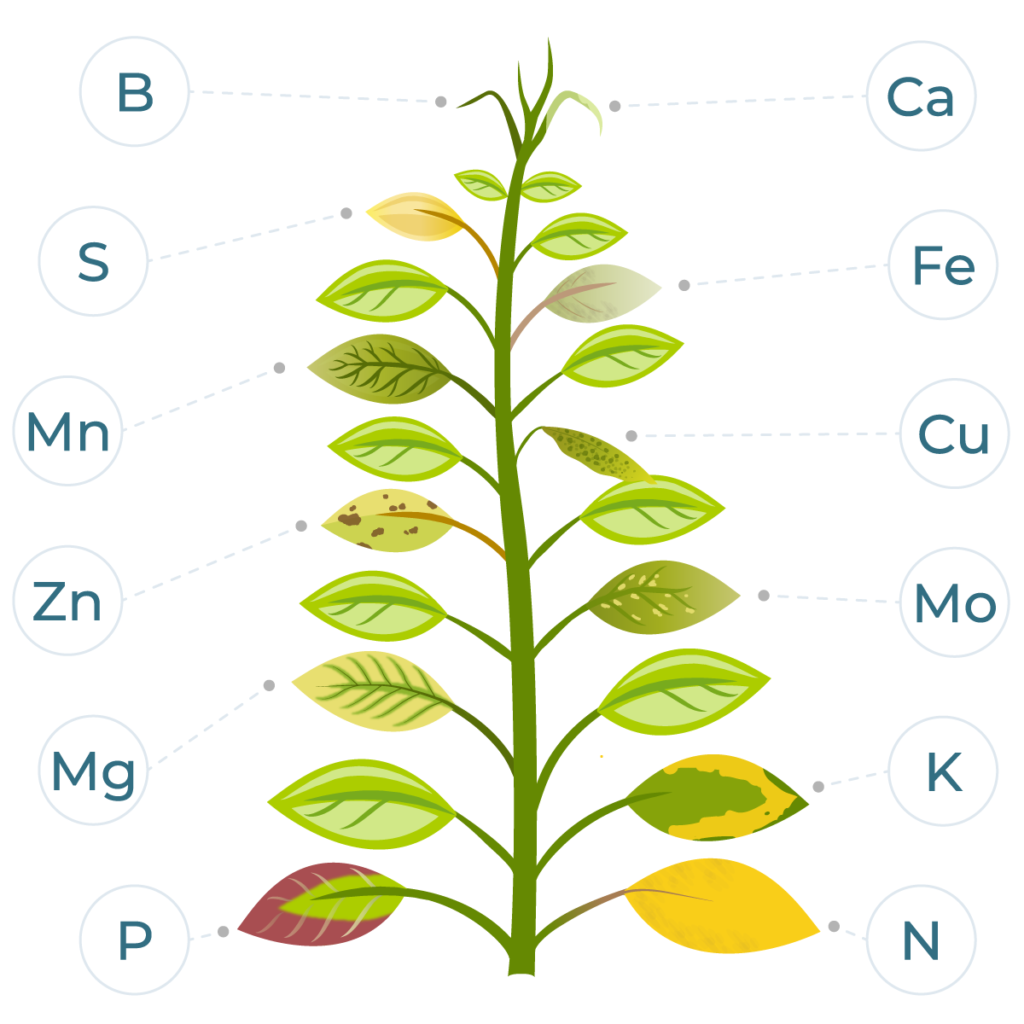
Nutrient Deficiency Chart
Need a quick reference? This chart shows common nutrient deficiency symptoms.
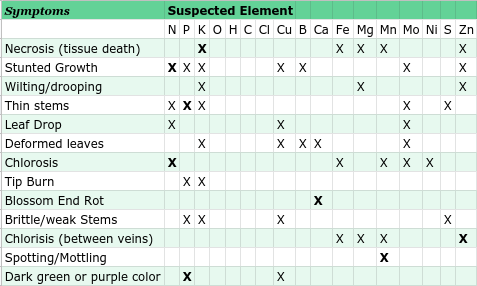
Note: many deficiencies cause similar symptoms. The symptoms and elements marked with a bold ‘X’ indicate this is the most likely deficiency.
